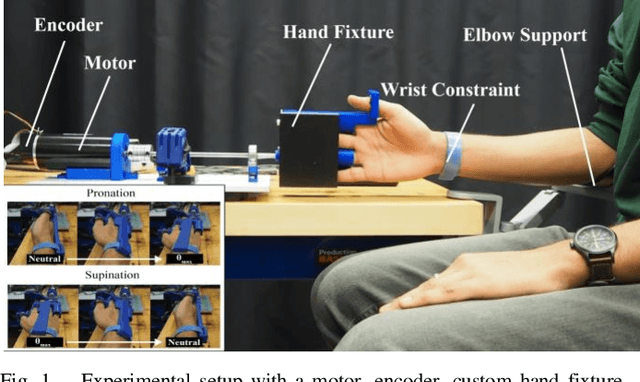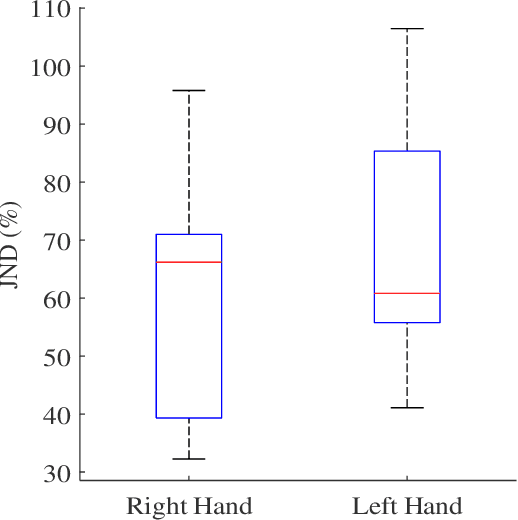Preliminary investigation into how limb choice affects kinesthetic perception
Paper and Code
Jul 22, 2021



We have a limited understanding of how we integrate haptic information in real-time from our upper limbs to perform complex bimanual tasks, an ability that humans routinely employ to perform tasks of varying levels of difficulty. In order to understand how information from both limbs is used to create a unified percept, it is important to study both the limbs separately first. Prevalent theories highlighting the role of central nervous system (CNS) in accounting for internal body dynamics seem to suggest that both upper limbs should be equally sensitive to external stimuli. However, there is empirical proof demonstrating a perceptual difference in our upper limbs for tasks like shape discrimination, prompting the need to study effects of limb choice on kinesthetic perception. In this manuscript, we start evaluating Just Noticeable Difference (JND) for stiffness for both forearms separately. Early results validate the need for a more thorough investigation of limb choice on kinesthetic perception.
 Add to Chrome
Add to Chrome Add to Firefox
Add to Firefox Add to Edge
Add to Edge